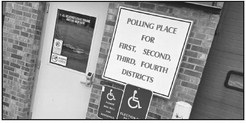Access to treatment key to suicide prevention efforts


About 500 people gathered on Friday evening in the Medford City Park for the Walk Together for Suicide Awareness and Prevention. Those in attendance included survivors, family members, friends, teammates and allies.
Each of those present has been impacted by suicide. For some it was the immediate and devastating loss of a child, parent or sibling. Others were impacted more distantly through a shared communal grief in a life ended far before their time.
The event sought to raise awareness and open a greater dialogue about the impact of suicide in the community. The effort of this dialogue is to tear down the old stigmas and address the silent epidemic of suicides sweeping across the country.
Raising awareness and starting those hard conversations along the way. is always needed. Sharing the warning signs to watch for and promoting the 988 national helpline number are essential in diverting potential suicide victims from taking their own lives.
Awareness and prevention efforts and crisis helplines can only go so far.
These crisis interventions are like pulling a wandering child out from in front of a speeding truck. They save lives and avert heart-rending tragedies in that moment. But it relies on someone alert and being there to prevent the next tragedy, and the one after that.
A lifeline is only as good as what it is connected to. While there has been a growing and successful effort in raising awareness and, if sought or caught, access to immediate crisis intervention, there is a woeful lack of resources for the needed follow-up care or for the preventative mental healthcare that would have prevented the crisis from occurring in the first place.
When people fall and break their arms, or get sick with the latest flu bug going around, people understand that. They can get the treatment needed to ease symptoms and aid in a swift recovery. When it comes to depression and other mental illness, the outward signs are less visible and more easily hidden. People who are unaffected by mental illness often simply do not understand the daily struggles faced, not seeing the sadness behind the forced smile or the danger signs in the thrill seeking and risk taking. Even if they do see the signs and a diagnosis is made, good luck in getting the specialist help needed. The national average for wait time to get treatment is five to six weeks. In rural areas where providers are few and far between, the wait time can often be measured in months.
Even then, care is rationed by insurance- company bean-counters who want a quick fix with the fewest number of billable hours possible. While treatments exist, getting the right one and fine tuning it to meet the needs of individual patients takes time and resources.
These resources are lacking due to the actions of penny-pinching politicians who see human services agencies as a place to make budget balancing cuts rather than as a needed investment. They are lacking because all of us who have been impacted by suicide and mental health have not demanded action and demanded the resources be put where they are most needed. And most tragically, the resources are lacking at times because there simply aren’t enough qualified mental health providers to meet the growing demand.
The goal of events such as last week’s Walk Together for Suicide Awareness and Prevention are noble and organizers and attendees should be celebrated for raising their voices and taking a stand.
It is time for the politicians and private providers who gatekeep access to mental health services to pay attention and take action to ensure that people are able to get the services they need before they have to be pulled from the ledge.




